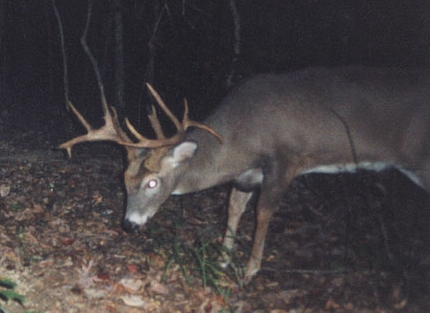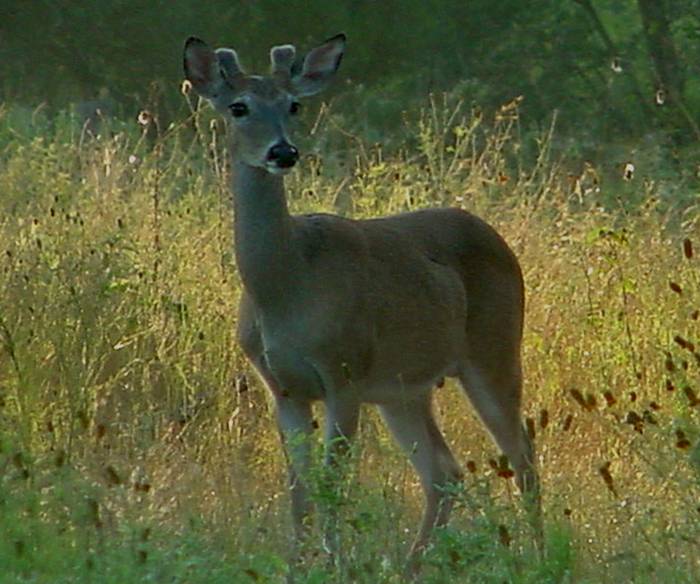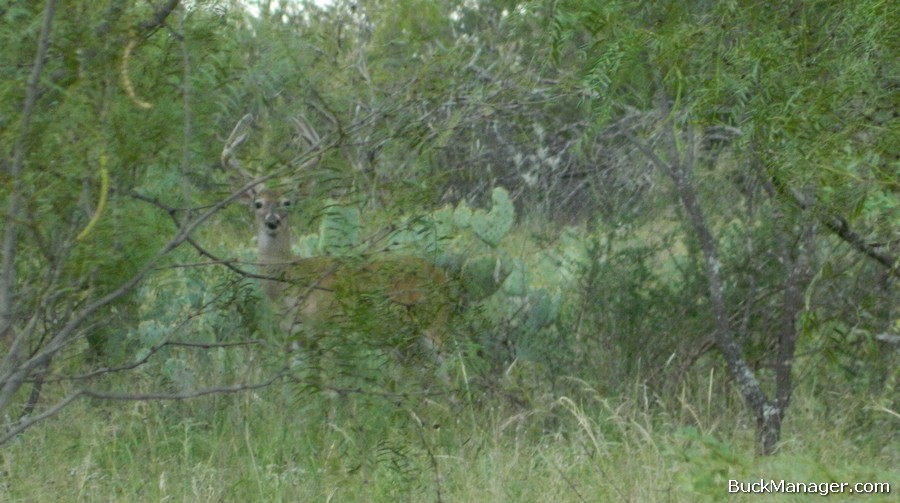Question: “I have a 5 1/2 year old buck that is a 9 point. Do you think there is a possibility that he may become a 10 point for this hunting season or do you think he will stay a 9 point buck? He has been a 9 point the last 3 years and I’ve been hoping for him to grow that 10th point, but no luck yet. Of course, I love having him pass on his genes.”
Response: Whether your buck grows into a typical 10 point frame buck depends on a number of variables. He very well could, but if I had to bet money one way or the other then I would bet that he comes up short, yet again, this year. For the most part, antler growth in white-tailed bucks is fairly predictable. The 3 major factors that impact antler development consist of age, genetics and nutrition. That will never change, but many other variables that comprise each of these categories may. Let’s talk about how each of these factors could impact your buck.

Age and Antler Size
Whitetail bucks will often increase antler points as they get older, but their antlers will peak and begin to decline if the buck is allowed to get really old, becomes ill, gets injured or if nutrition falls off. It is important to note that an increase in antler points is relative to the number of points a buck had to start with as a yearling, as a 1 1/2 year old deer.
As a rule of thumb, a buck that starts with fewer points, say 2-4, will have fewer antler points at maturity (5 1/2) than one that has 6-8 as a yearling. Bucks that are allowed to age will have antler spreads that are wider and most notably, heavier “horns.” Antler mass (circumference) can be another good physical characteristic to hone in on when aging bucks in the field. An older buck equals heavier antlers, but not always additional points.
From my experience, the overwhelming odds are that a whitetail buck that does not have a 10 point main-frame by 4 1/2 years of age will not develop one in subsequent years. Yes, it CAN happen.

Genetics and Antler Potential
Genes are the underlying factors that determine the potential for antler growth in any buck. Growing older along with good nutrition will allow a buck to physically express those underlying genes, but no amount of age or food can “fill the gap” where a buck may naturally lack. If you know the deer on your hunting grounds have access to high quality foods, then all you can do is let them get older and, if possible, practice selective buck harvest to remove those with less potential for antler growth and leave those with more potential.
Selective harvest (i.e. culling) works. It’s not so much about changing the gene composition of a local deer herd, which can happen in intensive situations over years, but rather about allowing those great 3-4 year old bucks to get older and removing the lesser ones so they don’t.
Buck Nutrition
Removing deer from a whitetail herd is the most important aspect of deer management. Whitetail management is a numbers game, which is why I mentioned (above) removing those low-end, middle-aged bucks and leaving the better ones. Selective harvest removes deer from the herd, but it also decreases competition for resources, which affects food and nutrition! It’s also important to shoot does, which can influence (or not) the number of animals in a population annually.
Large numbers of does, as compared to bucks, lengthens the breeding season and will physically run down bucks. They WILL have smaller antlers the following year if they do not have adequate post-rut nutrition.
More deer means less food per mouth, while fewer deer means more food per mouth. A buck’s diet and overall level of nutrition impacts his annual antler growth. This is most notable during years when habitat is really great or when habitat is really poor. However, tough years are harder on 1-3 year old bucks than those that are 4+ years old.
Older, bigger bucks have more resources for antler growth to pull from within their bodies (bones) and they also have access to the highest quality foods within an area. Skeletal growth continues until age 3, so mature bucks do not have to worry about that either.

Deer Management Considerations: Your 9 Point
Based on the number of antler points your buck has a 5 1/2 years of age, my guess is that this buck is destined to be just that, a 9 point. If you were waiting on him to be a 10 point then you did the right thing, you were patient. However, at 5 1/2 years this buck has age on his side and still no dice. I suspect that the genes for a 10+ point frame just are not there, so no amount of age will get him over the hump.
Remember, there is no deer management without deer hunting and harvest. If you are fortunate enough to see this mature buck this deer hunting season then my recommendation would be to take him. The odds of him surviving to the next season are decreasing rapidly with every year, and he’s competing with some (hopefully) better bucks for both food and breeding rights. Every deer is a good one, but especially when it’s a mature buck. Best of luck!
This was very vital information, thank you for the great info.
I have raised a buck from 2-3 weeks old to now a yearling. He was raised on goats milk & Purina One Lamb & Rice dog food, mixed up into a blender. He now eats it as is with my 15 year old lab. He grew his nubs about 3-4in & 2in of horn. My question is was he supposed to drop the nubs, before growing his first set of antlers as a yearling? Also, I knocked off one of the nubs & clearly the other side is way ahead in growth. Will this be a life long issue? I know a little bit about the pedicles in the base of a horn.
BCrab, antler growth in bucks is usually quite symmetrical between the left and right side. The “nubs” should form the basis of the pedicles so they won’t be shed. If the buck did grow a very small amount of antler material (“horn”) I assume it did not shed the velvet. This material should separate from the pedicle before a new set of antlers are grown. The deer could have an permanent issue if he injured on of the pedicles.
All the bucks on my PA property are growing thier horns late this year. The bucks are at peak growing time right now and I have tons of corn, Rack-Up, Deer Cane, Buck Jam in a mineral site, and even a food plot. I was wondering if there was anything else I could use to make him grow to his maximum potential?
Dear sir,
I wanted to get your opinion on a Management decision that we made to see if I made the right choice. We had a 21/2 year old buck that had no mass , minimal spread ( 13 Inches) and was short horned. I was wondering if we made the right decision to take him as a meat deer for the table. We are a low fence property with much larger 21/2 year olds that we are keeping for the gene pool. My issue is that I am on the fence about taking him so early and wondering if we should have waited until 3-31/2? Opinion please?
Curt, unfortunately I can not provide you with a definitive yes or no. However, it sounds like the decision was based on the deer having less desirable antler characteristics than other deer. Go with it. I’m not going to get into whether culling is effective or not, only that removing some deer from the herd leaves additional food for the remaining deer in the area. While it’s difficult to impact genetics by removing deer, you can immediately increase food resources for the remaining herd by harvesting deer.
Fortunately, deer are a renewable resource, so as long as you manage the herd you will always have deer. It was generally a good year for antler growth, so it sounds like you made a good harvest based on current and future antler growth. Besides, there is no guarantee the buck lives to see 3 1/2 years of age. I wouldn’t sweat it.